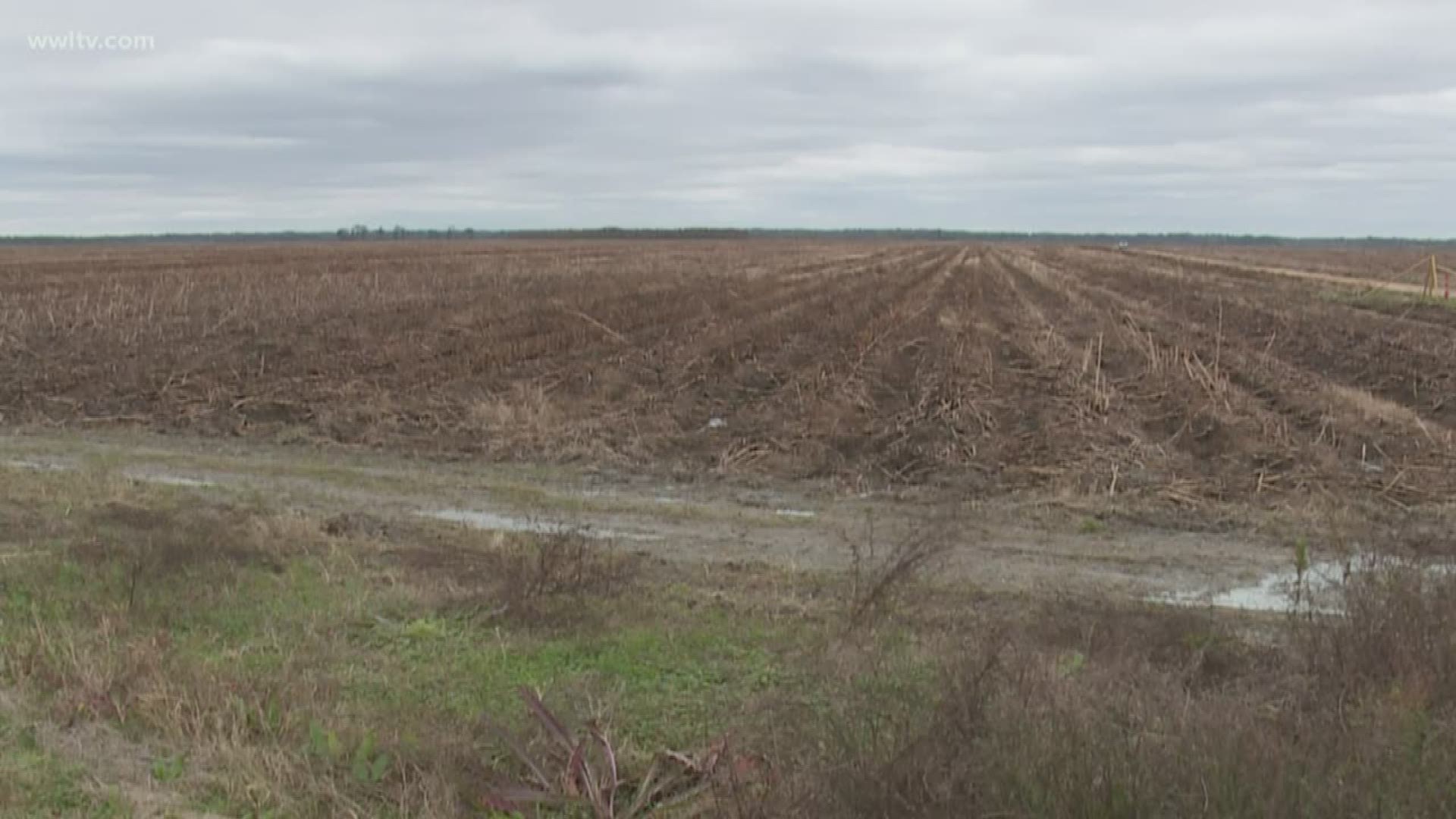ST. JAMES PARISH, La. — Before sugar cane is harvested in a field, it is burned, removing the outer leaves which are considered trash.
For a sugar cane field in St. James Parish, it could be the last harvest as it is the proposed site for the $9.4 billion Formosa Petrochemical Plant.
Sharon Lavigne is a director for RISE St. James, a grass-roots community group opposing the building of another industrial complex in their community. Along the road where she lives are industrial plants and tank farms, some only a stone’s throw from the homes that are left.
“I live two miles away and it’s devastating to know they want to live and build a plant in the area where I live,” Lavigne said. “We are already bombarded with 12 of them.”
The latest revelation of where the proposed site would be built has preservationists and community members alike in arms.
In the 1800s, the sugar cane field was a plantation. Documents show it was once owned by a man named Benjamin Winchester. Hundreds of enslaved workers were buried there.
“It’s sacred ground. That’s people that were buried there not animals,” Lavigne said. “Those are people that lived there, worked there and worked on that land.”
Pam Spees of the Center for Constitutional Rights says archaeologist with the state department confirmed the burial site after an independent archaeologist working on a separate project reached out with a method to locate the burial grounds.
“The difference is now there is a way to map some of these cemeteries,” Spees said.
The state division of archaeology asked Formosa to focus on two unmarked sites: the Acadia Cemetery and Buena Vista Cemetery. Due to the sites being unmarked, archaeologists believe they are the gravesites of enslaved people.
In their Supplemental Environmental Assessment Statement submitted to the Louisiana Department of Environmental Quality, TerraXploration’s, the company contracted by Formosa to do the archaeological survey, confirmed four human burials, several grave shafts, historic posts, and cultural material.
“The confirmed burial site already has a pipeline running through it from years ago, the other one may have already been destroyed,” Spees said.
Eyewitness News anchor Charisse Gibson visited St. James and noticed the area where the Buena Vista gravesite was located was fenced off.
While both the state and Terraxploration’s don’t believe more surveys need to be conducted for the Acadia cemetery, Spees isn’t convinced.
“There was a third site investigation where they learned the first burial site they confirmed was actually larger than what they mapped the first time,” Spees said. “It’s quite possible that there are gravesites out there that could also be disturbed or desecrated through construction inadvertently.”
It's a possibility that Spees' and Lavigne's hope leads the LDEQ to pause permit applications for the proposed petrochemical plant.
WWL-TV reached out to Fermosa to get their response to RISE St. James' concerns but did not hear back. In the meantime, RISE St. James is appealing to the DEQ to not grant air permits to Formosa.
► Get breaking news from your neighborhood delivered directly to you by downloading the new FREE WWL-TV News app now in the IOS App Store or Google Play.

